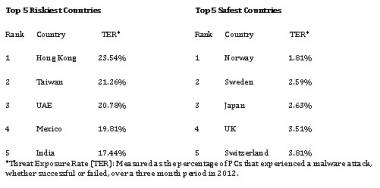

- #MALWARE YEARS USED RUNONLY TO AVOID SOFTWARE#
- #MALWARE YEARS USED RUNONLY TO AVOID CODE#
- #MALWARE YEARS USED RUNONLY TO AVOID MAC#
When installed, GreenDispenser may display an ‘out of service’ message on the ATM - but attackers who enter the correct pin codes can then drain the ATM’s cash vault and erase GreenDispenser using a deep delete process, leaving little if any trace of how the ATM was robbed. GreenDispenser provides an attacker the ability to walk up to an infected ATM and drain its cash vault. For more than five years, macOS users have been the targets of a sneaky malware operation that used a clever trick to avoid detection and hijacked the hardware resources of infected users to mine cryptocurrency behind their backs.On the heels of recent disclosures of ATM malware such as Suceful, Plotus and Padpin (aka Tyupkin), Proofpoint research has discovered yet another variant of ATM malware, which we have dubbed GreenDispenser.
#MALWARE YEARS USED RUNONLY TO AVOID SOFTWARE#
Named OSAMiner, the malware has been distributed in the wild since at least 2015 disguised in pirated (cracked) games and software such as League of Legends and Microsoft Office for Mac, security firm SentinelOne said in a report published this week. “OSAMiner has been active for a long time and has evolved in recent months,” a SentinelOne spokesperson told ZDNet in an email interview on Monday. “From what data we have it appears to be mostly targeted at Chineses/Asia-Pacific communities,” the spokesperson added. Nested run-only AppleScripts, for the win!īut the cryptominer did not go entirely unnoticed.

SentinelOne said that two Chinese security firms spotted and analyzed older versions of the OSAMiner in August and September 2018, respectively.īut their reports only scratched the surface of what OSAMiner was capable of, SentinelOne macOS malware researcher Phil Stokes said yesterday.
#MALWARE YEARS USED RUNONLY TO AVOID CODE#
The primary reason was that security researchers weren’t able to retrieve the malware’s entire code at the time, which used nested run-only AppleScript files to retrieve its malicious code across different stages.Īs users installed the pirated software, the boobytrapped installers would download and run a run-only AppleScript, which would download and run a second run-only AppleScript, and then another final third run-only AppleScript. Since “run-only” AppleScript come in a compiled state where the source code isn’t human-readable, this made analysis harder for security researchers. Yesterday, Stokes published the full-chain of this attack, along with indicators of compromise (IOCs) of past and newer OSAMiner campaigns. Stokes and the SentinelOne team hope that by finally cracking the mystery surrounding this campaign and by publishing IOCs, other macOS security software providers would now be able to detect OSAMiner attacks and help protect macOS users. “In this case, we have not seen the actor use any of the more powerful features of AppleScript that we’ve discussed elsewhere, but that is an attack vector that remains wide open and which many defensive tools are not equipped to handle.” “Run-only AppleScripts are surprisingly rare in the macOS malware world, but both the longevity of and the lack of attention to the macOS.OSAMiner campaign, which has likely been running for at least 5 years, shows exactly how powerful run-only AppleScripts can be for evasion and anti-analysis,” Stokes concluded in his report yesterday. The IOCs are available in the SentinelOne OSAMiner report, here. Apple has spent years reinforcing macOS with new security features to make it tougher for malware to break in. But a newly discovered vulnerability broke through most of macOS’ newer security protections with a double-click of a malicious app, a feat not meant to be allowed under Apple’s watch.
#MALWARE YEARS USED RUNONLY TO AVOID MAC#
Worse, evidence shows a notorious family of Mac malware had been exploiting this vulnerability for months before it was subsequently patched by Apple this week.

Over the years, Macs have adapted to catch the most common types of malware by putting technical obstacles in their way. Indeed, macOS flags potentially malicious apps masquerading as documents that have been downloaded from the internet.


 0 kommentar(er)
0 kommentar(er)
